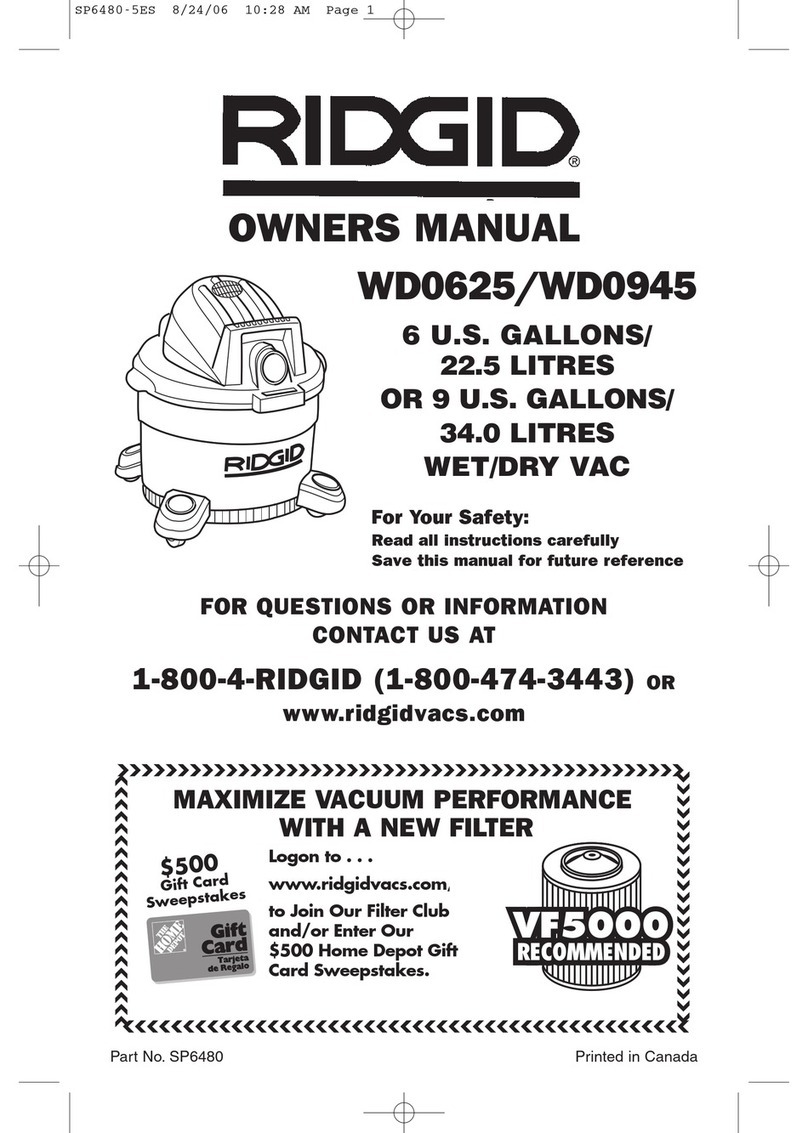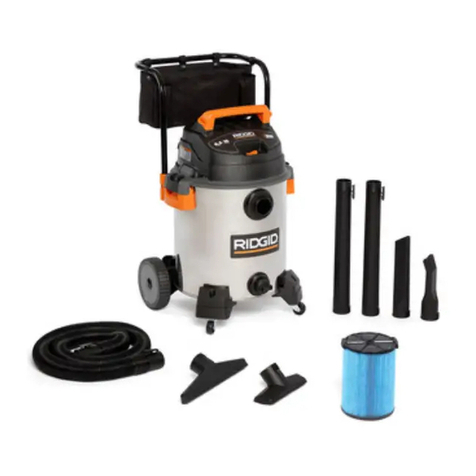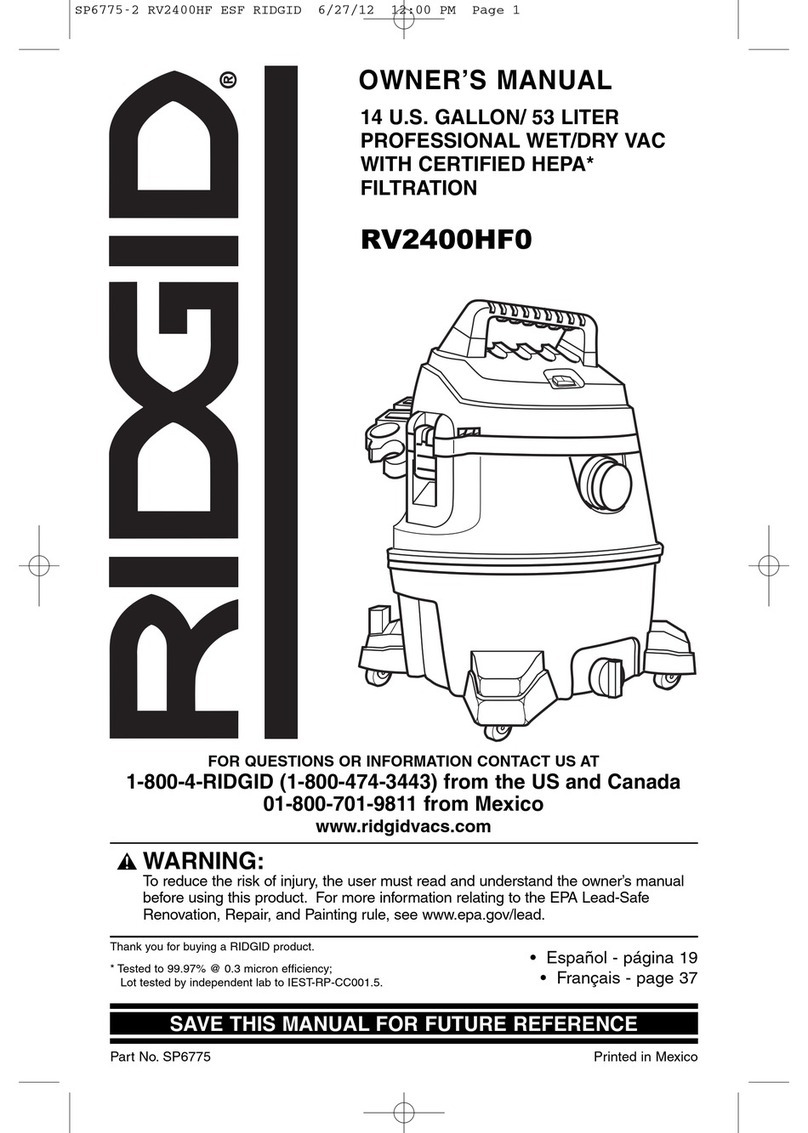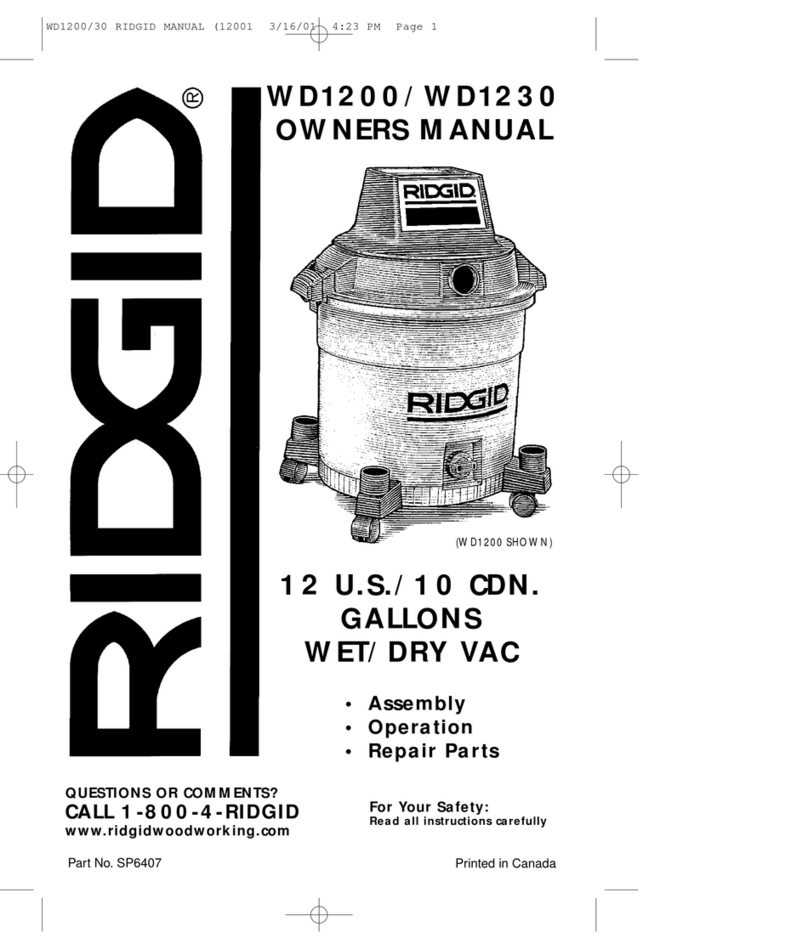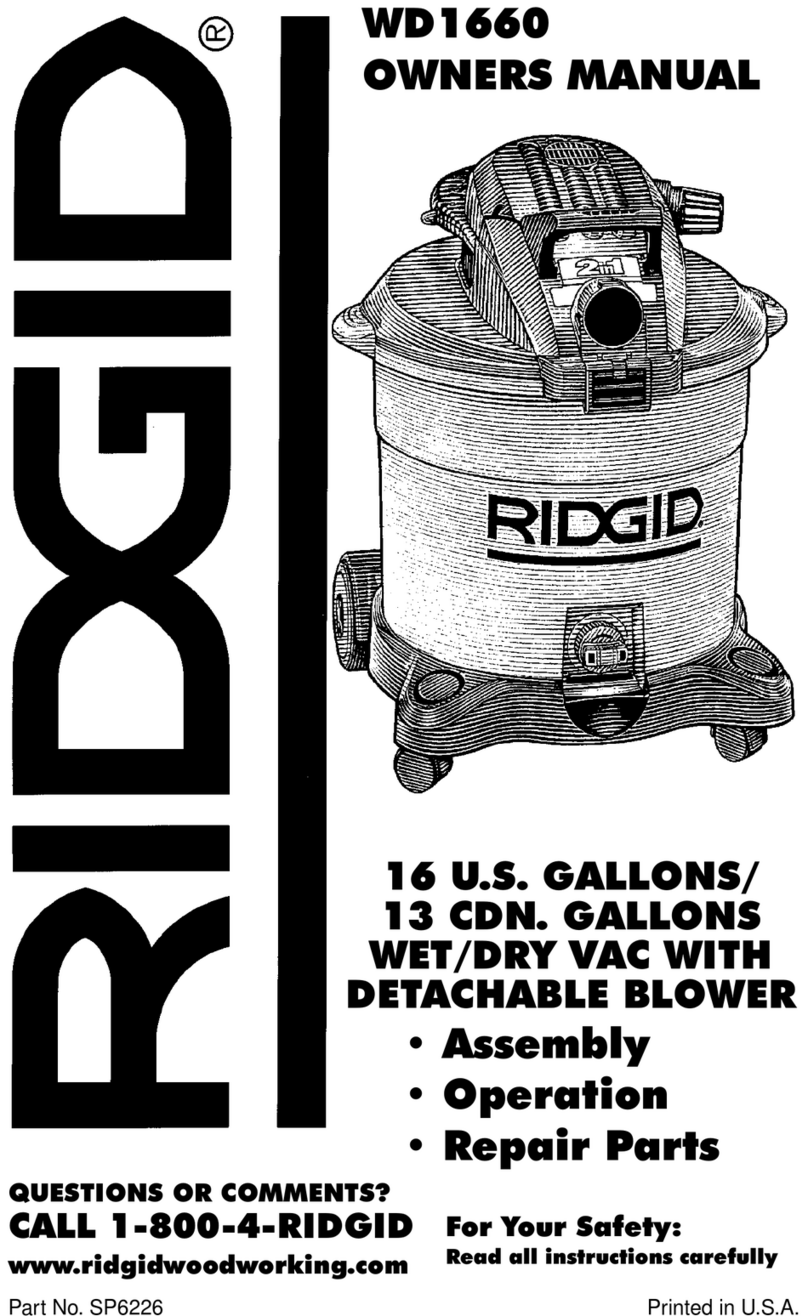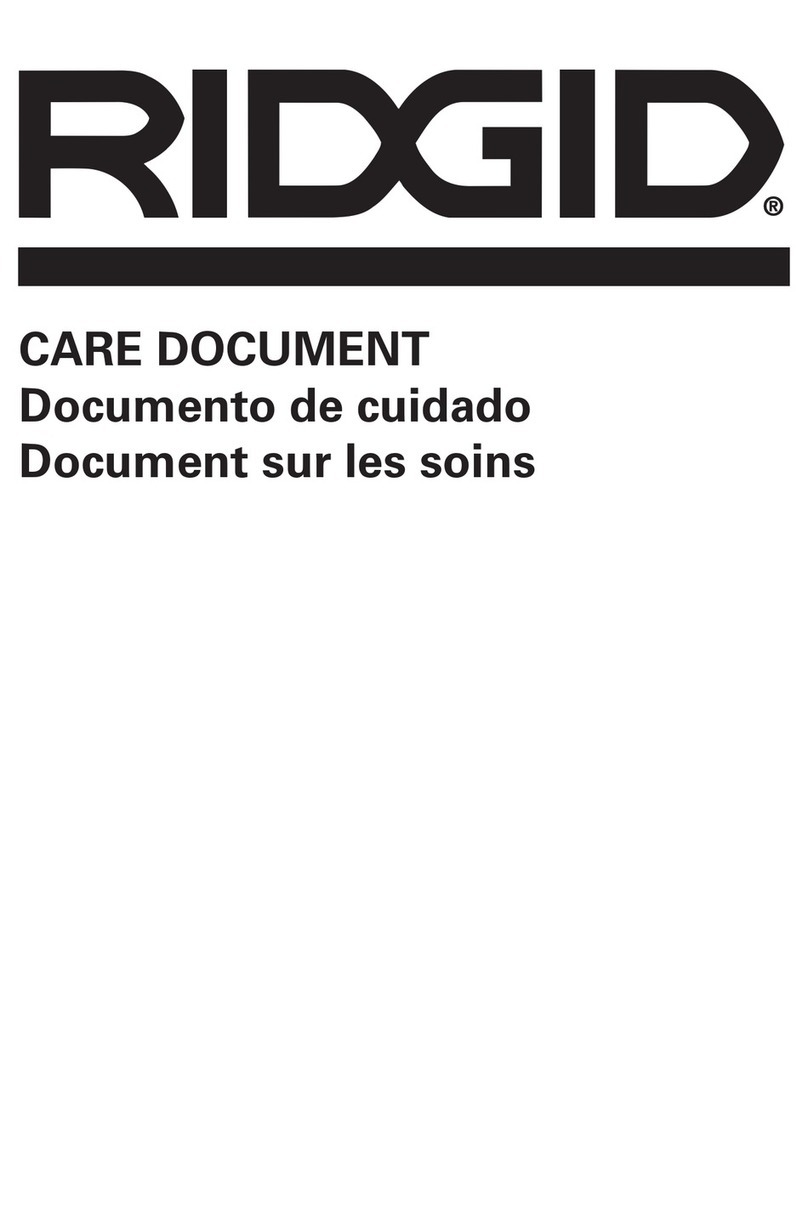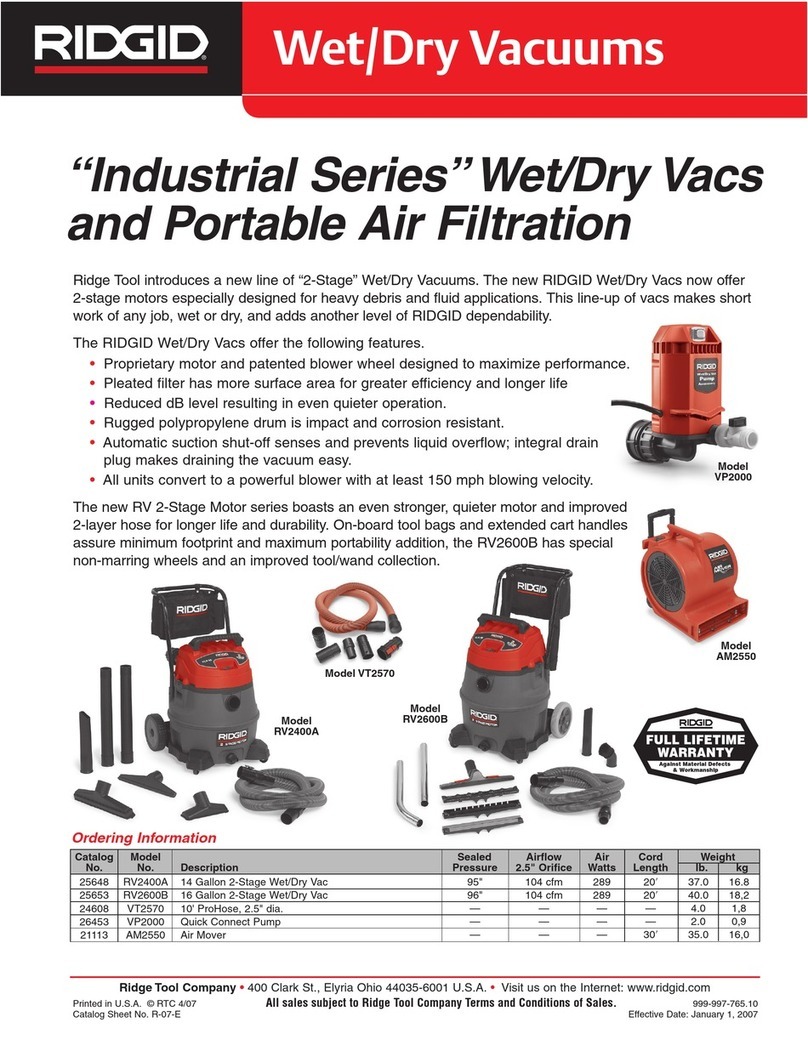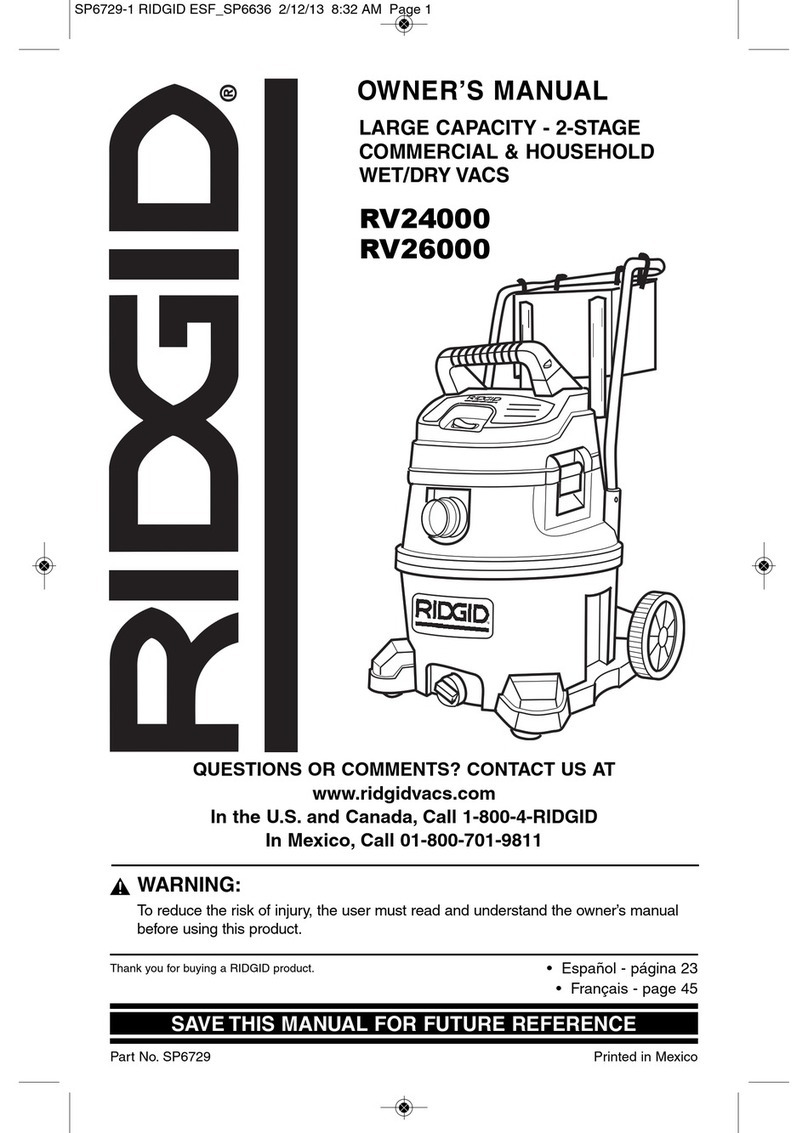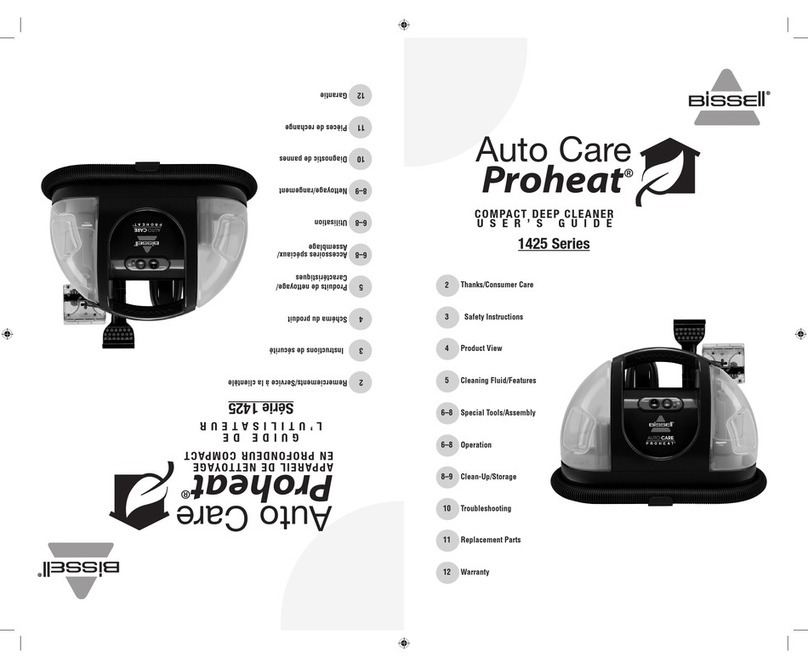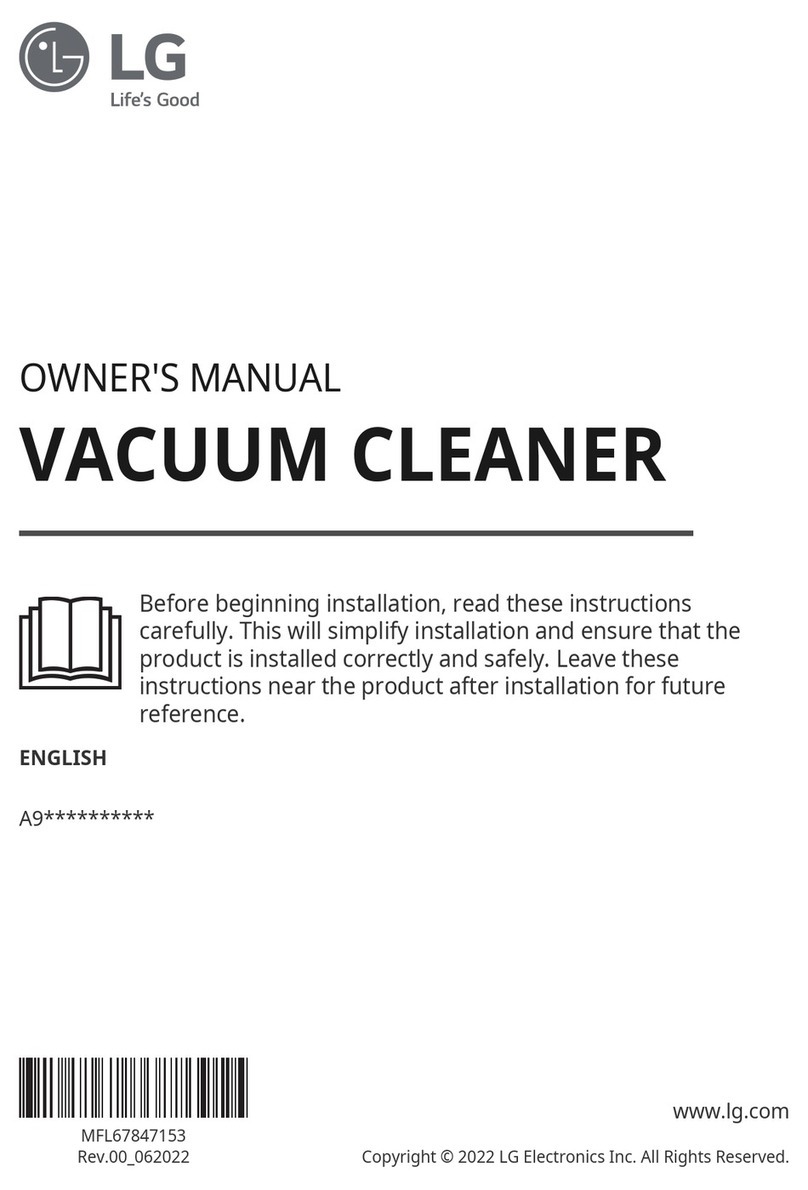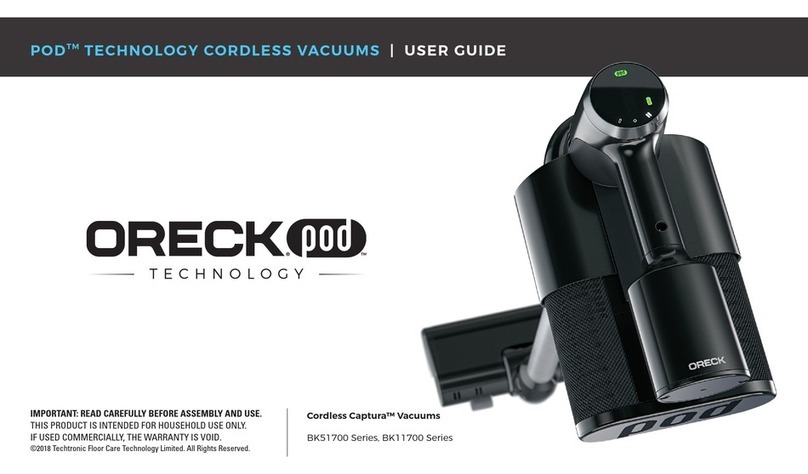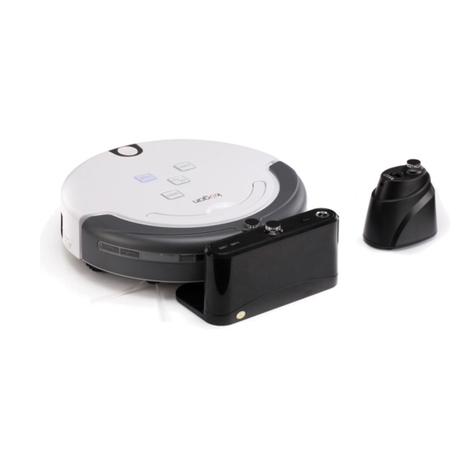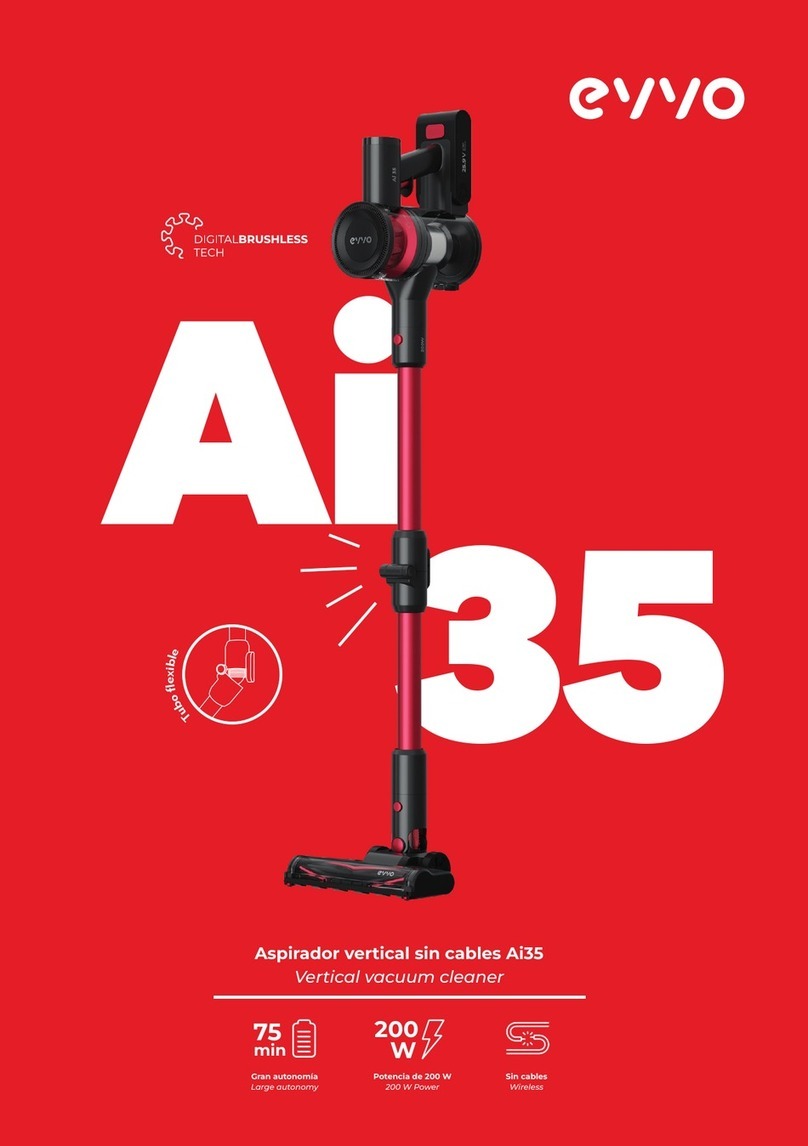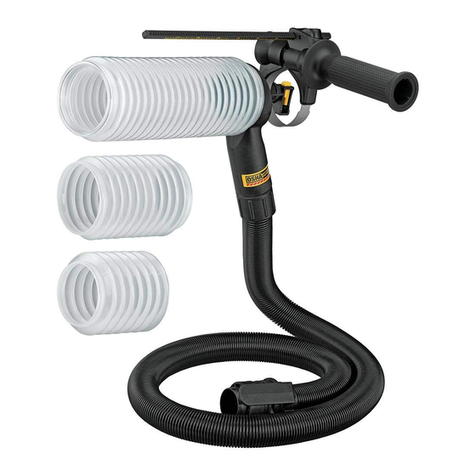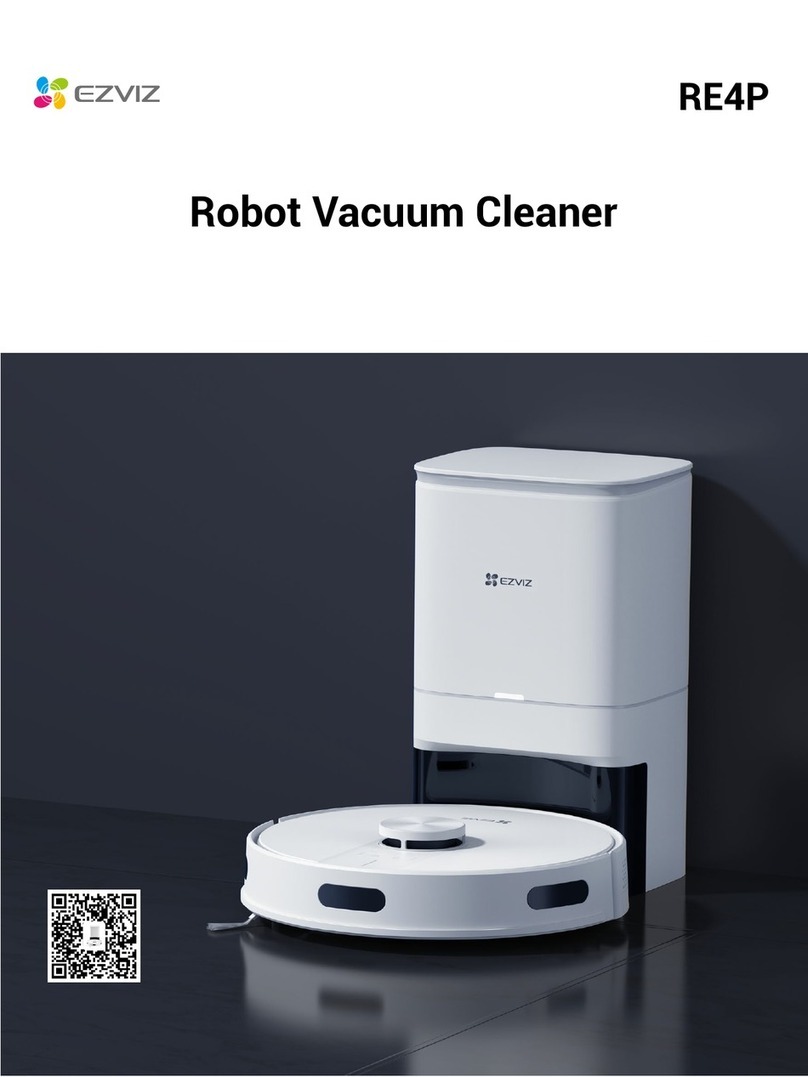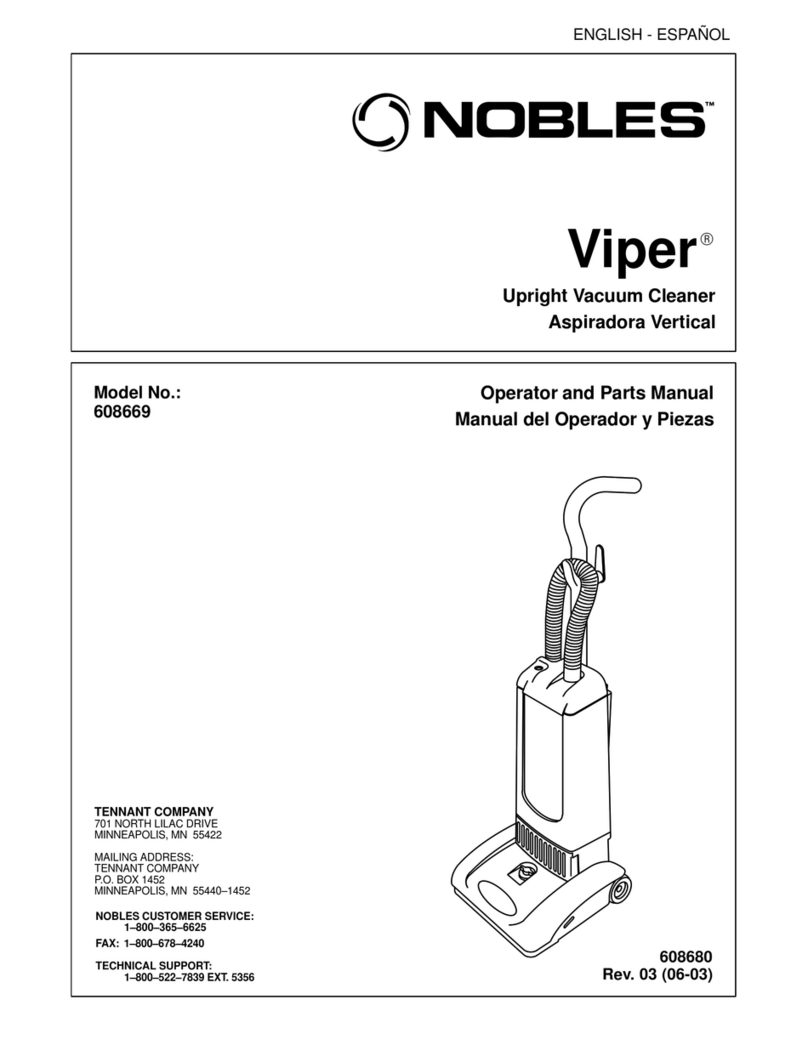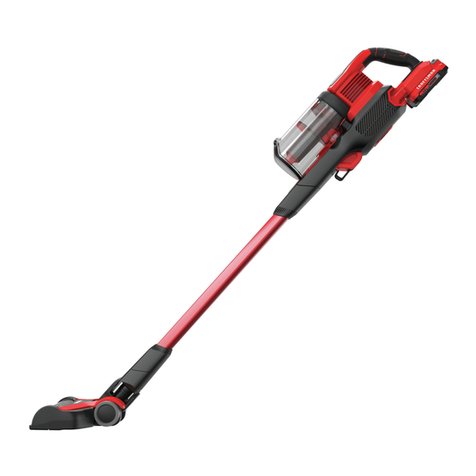
2
– IMPORTANT –
If you require a French owners manual, call 1-800-4-RIDGID or E-mail us at
info@ridgidwoodworking.com.
Si vous nécesstent un mode d’emploi en français, téléphonez au 1-800-4-RIDGID ou con-
tactez-nous par courrier électronique à info@ridgidwoodworking.com.
Table of Contents
Section Page
Table of Contents ..................................2
Important Safety Instructions .................2
Safety Signal Words ............................2
Save These Instructions ........................3
Introduction ............................................4
Unpacking and Checking Carton
Contents .............................................4
Carton Contents List ...........................4
Float/Cage Assembly .............................5
Filter Assembly/Replacement ................5
Accessory Caddy/Caster Assembly .......6
Caster/Caster Foot Assembly ................6
To Store Your Accessories ....................6
Vac Assembly ........................................7
Positioning Detachable Blower
(Power Head Assembly) ........................7
Section Page
Operation ............................................... 8
Vacuuming Dry Materials .................... 9
Vacuuming Liquids .............................. 9
Emptying Dust Drum ........................... 9
Cord Wrap ......................................... 10
Moving the Vac .................................. 10
Blowing Feature ................................10
Assemble the Detachable Blower for
“Blowing” ......................................... 11
Maintenance ........................................11
Blower Intake .....................................11
Cleaning Vac Filter ............................ 12
Wet/Dry Vac ...................................... 12
Wet Nozzle ........................................ 13
Repair Parts ........................................ 14
IMPORTANT SAFETY INSTRUCTIONS
Safety is a combination of common
sense, staying alert and knowing how
your vac works. Read this manual to
understand the vac.
Safety Signal Words
DANGER: means if the safety information
is not followed someone will be seriously
injured or killed.
WARNING: means if the safety information
is not followed someone could be seriously
injured or killed.
CAUTION: means if the safety information
is not followed someone may be injured.
When using your Wet/Dry Vac, follow basic
safety precautions including the following.
WARNING- To reduce
the risk of fire, electric shock, or
injury:
Read and understand this owner’s manual
and all labels on the Wet/Dry Vac before
operating. Use only as described in this
manual. To reduce the risk of personal
injury or damage to Wet/Dry Vac, use only
RIDGID recommended accessories.
Sparks inside the motor can ignite flamma-
ble vapors or dust. To reduce the risk of fire
or explosion:
• Do not vacuum, or use this Wet/Dry Vac
near, flammable or combustible liquids,
gases, or explosive dusts like gasoline
or other fuels, lighter fluid, cleaners, oil-
based paints, natural gas, hydrogen,
coal dust, magnesium dust, grain dust,
or gun powder.
• Do not use Wet/Dry Vac as a sprayer.
Do not vacuum anything that is burning or
smoking, such as cigarettes, matches, or
hot ashes.
Do not vacuum fireplace soot or ash. This is
a very fine dust which will not be captured
by the filter and may cause damage.
To reduce the risk of health hazards from
vapors or dusts, donot vacuum toxic materials.
Do not use or store near hazardous materials.
To reduce the risk of electric shock, do not
expose to rain. Store indoors.
Do not allow to be used as a toy. Close
attention is necessary when used by or
near children.








